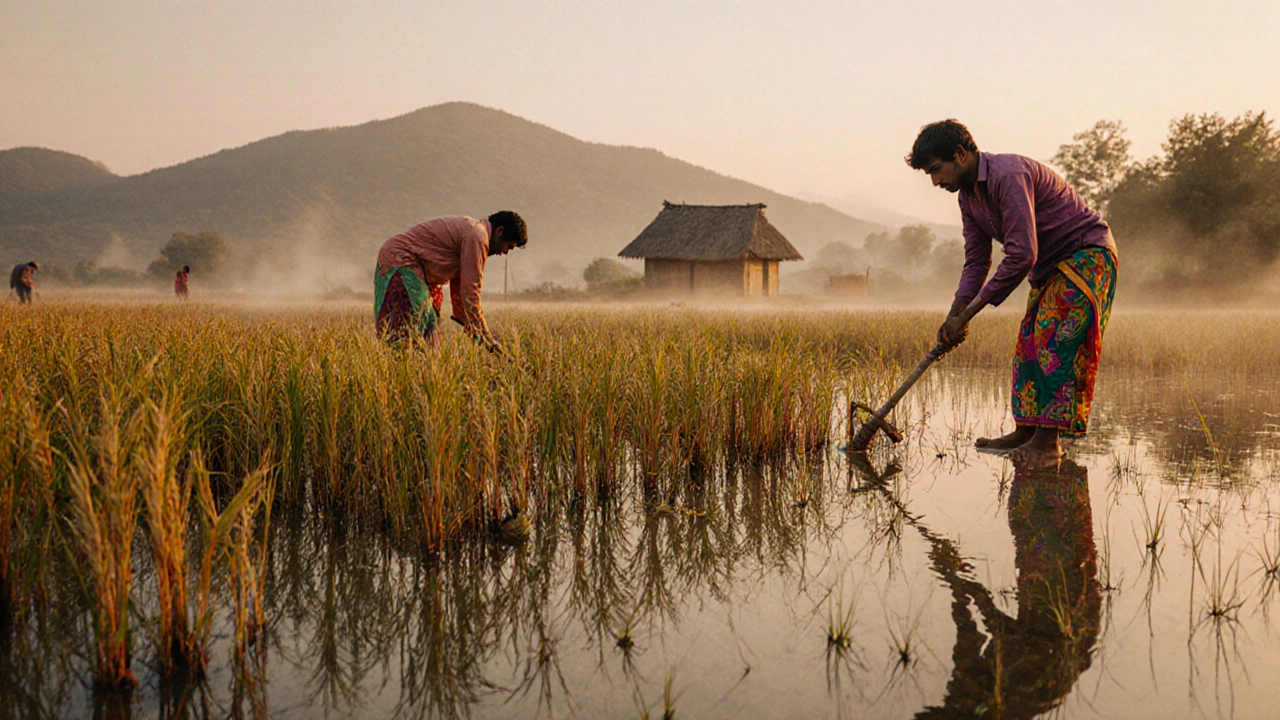Rice doesn't come back every year-it's an annual crop that must be replanted each season. Learn why rice can't regrow, how farmers manage yearly planting, and what perennial rice research means for the future.
Rice: Annual or Perennial? What You Need to Know for Indian Gardens
When you think of rice in India, you picture fields flooding after monsoon rains, farmers transplanting seedlings, and harvests that feed millions. But here’s the real question: rice, a staple cereal grain that forms the backbone of Indian diets and farming systems. Also known as paddy, it is typically grown as an annual crop — meaning it completes its life cycle in one growing season and must be replanted each year. This isn’t just tradition; it’s biology. Most rice varieties in India, from Basmati to Sona Masuri, are bred to grow fast, mature quickly, and die after seed production. They don’t survive winter or dry spells. That’s why farmers clear fields, plow again, and sow new seeds every season.
But what about perennial rice, a rare type of rice that regrows from the same root system year after year without replanting? It’s not science fiction. Scientists in China and Africa have developed experimental perennial rice strains that can yield for three to five seasons. In India, trials are still small-scale, mostly in research stations like ICAR in Kerala and Tamil Nadu. These varieties could cut labor costs, reduce soil erosion, and save water — big wins for small farmers. But they’re not ready for mainstream use yet. Most Indian farmers still rely on traditional annual rice because it’s predictable, high-yielding, and supported by government procurement systems. Perennial rice doesn’t fit into current supply chains, seed distribution networks, or subsidy models. So while the idea is promising, the reality remains: for now, rice in India is annual.
That doesn’t mean you can’t experiment. If you’re growing rice in a backyard pond, container, or terrace garden, you might notice some plants sprouting again after harvest. That’s not true perennialism — it’s just leftover tillers or volunteer seedlings. True perennial rice needs specific genetics, warm climates, and no frost. In India, only southern regions like Kerala or coastal Tamil Nadu have conditions even close to suitable. Even then, yields are lower than annual varieties. The real value of perennial rice isn’t in your balcony garden — it’s in reshaping how entire farming systems work. Imagine fields that don’t need tilling every season. Fields that hold soil, store carbon, and need less water. That’s the future. But until then, if you’re planting rice in India, plan for it to be an annual.
Below, you’ll find real-world guides from Indian gardeners and farmers who’ve tried everything — from flood-tolerant varieties to container-grown rice, from compost-heavy soil mixes to drip-fed paddy beds. Whether you’re curious about crop cycles, soil needs, or why rice behaves the way it does, these posts give you the practical truth — no theory, no fluff, just what works on the ground.
